Dead Cells: Return to Castlevania review – it’s back

It’s been 10 years since the last new Castlevania game. That’s far too long. The pain of waiting for a new game as a fan is worsened by the last new game being a fairly rubbish 3D action game rather than what Castlevania does best: 2D side-scrolling exploration games.
Sure, others have stepped up to try and fill those shoes. There’s no shortage of gothic Metroidvania sidescrollers, and some of them are even pretty good. But it’s not quite the same when there’s no Belmont, Alucard, or Dracula. Enter Dead Cells, and the fantastic Return to Castlevania DLC.
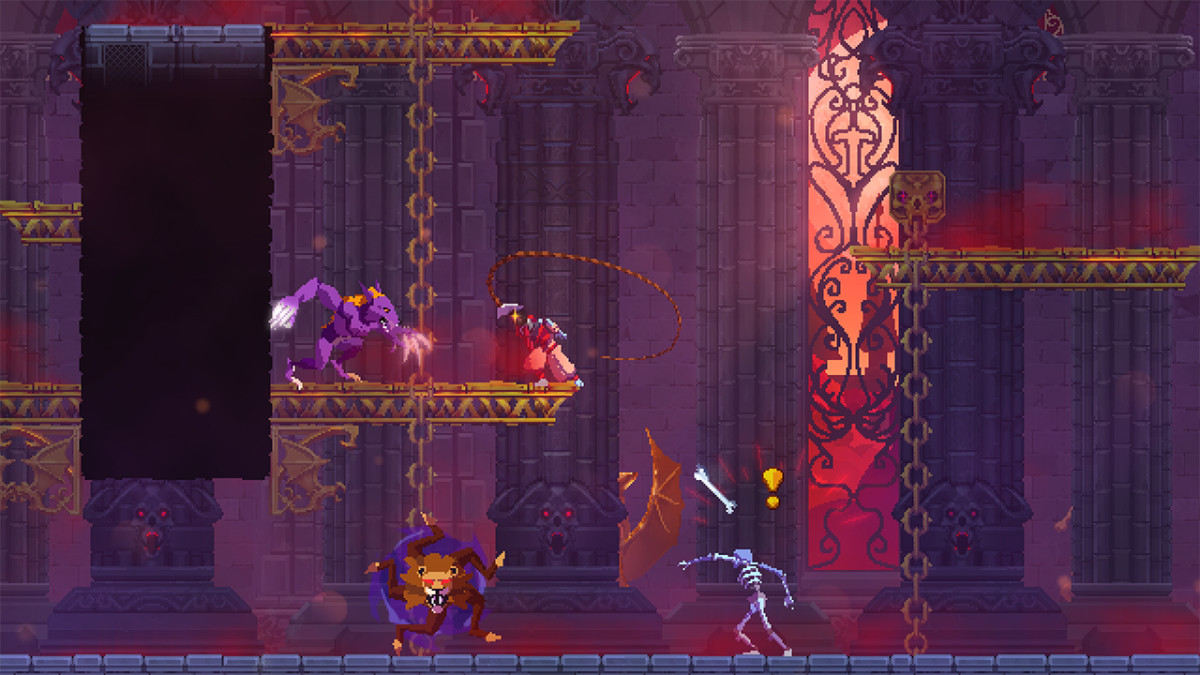
First, let’s quickly talk about Dead Cells. Because honestly, wow – why did nobody tell me how amazing this game is? Fast, snappy action platforming, wonderful roguelike mechanics, and a remarkably charming aesthetic and art style to tie it all together. To access Return to Castlevania, you have to have completed a full playthrough of Dead Cells, and I can tell you I did a lot more than just a full playthrough.
I can imagine it would be frustrating, however, if like me you hadn’t played Dead Cells before and just want to play some solid Castlevania-themed content. Having to play through the entire game first is a long, sometimes frustrating, and frankly a bit exhausting process. It’s a wonderful game, there’s no doubt about that, but if you’ve waited ten years for Castlevania, having to dedicate eight hours or more to vanilla Dead Cells first might be a big ask.
So we’ve played through the entirety of Dead Cells (multiple times), now what? Well, that unlocks a few new biomes, or maps, to play through – and we can now kick off each new run with the first stage of the Castlevania biome, Castle Outskirts. That means you can jump into it at the start of a run, whenever you like, or you can ignore it and play through the main game instead.
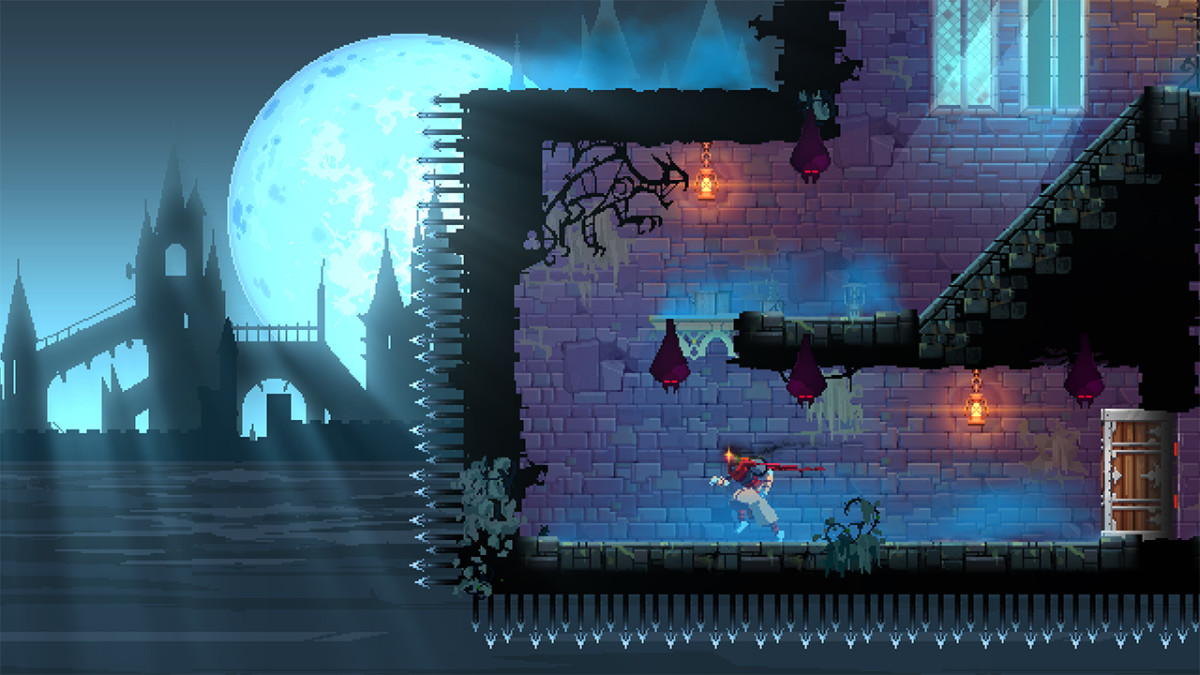
Let me tell you though, stepping into the Castle Outskirts and hearing that music, that familiar, incredible, beautiful music, is a show-stopper. Standing in the shadow of Dracula’s Castle, an electrifying rendition of Vampire Killer playing in the background – it’s an experience that sent shivers down my spine. I waited ten years for this, and suddenly it all felt worth it.
Then came the enemies, straight out of Castlevania, dressed up in Dead Cells’ signature style. It was a little bit strange defeating them with the nail from Hollow Knight, but video game crossovers are always a little bit funky, and when you’ve got as many as Dead Cells does, it’s easier to just lean into the absurdity.
Exploring deeper into the map, I found Maria, the best Castlevania character, and her cat wandering around. I spoke to the cat, it gave me a key, I freed Maria, and she gave me an outfit that let me play through Dead Cells as her. Plus I got to keep the cat, an ally as powerful as it is cute and cuddly.
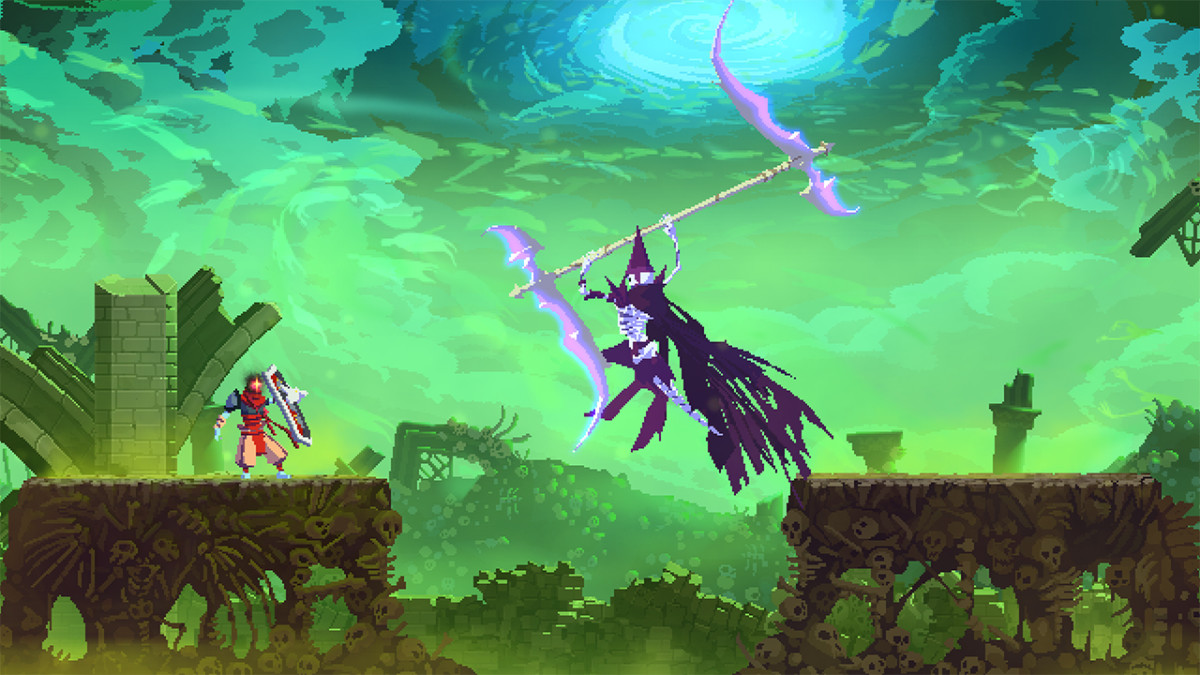
After that I bumped into Alucard, and had a brief chat with Richter Belmont, and the more I progressed through the game, the more I got excited about what I was experiencing. Sure, the gameplay was the same as it was for the rest of Dead Cells, but it was Castlevania! All my pals were there, there were skeletons tossing bones at me, a harpy swooped at me and knocked off a huge chunk of my health. I was home.
And that’s to say nothing of the unlockable weapons. There are the familiar Castlevania subweapons, like the Cross, which acts exactly as you’d expect it to, as well as a host of wonderful main weapons. Not every new weapon was exactly to my liking, Alucard’s Shield for example is clunky and frustrating to use, but just knowing that it’s there, and I can almost play Dead Cells exactly as if it were a Castlevania game, that’s enough for me.
It helps, too, that the map design is a little bit tweaked for this DLC compared to the rest of Dead Cells. The maps are a lot more open, a lot more expansive, with a much heavier focus on exploration. There’s also a fair amount of verticality in some of the stages, which was present in the main game but is used to much greater effect here.
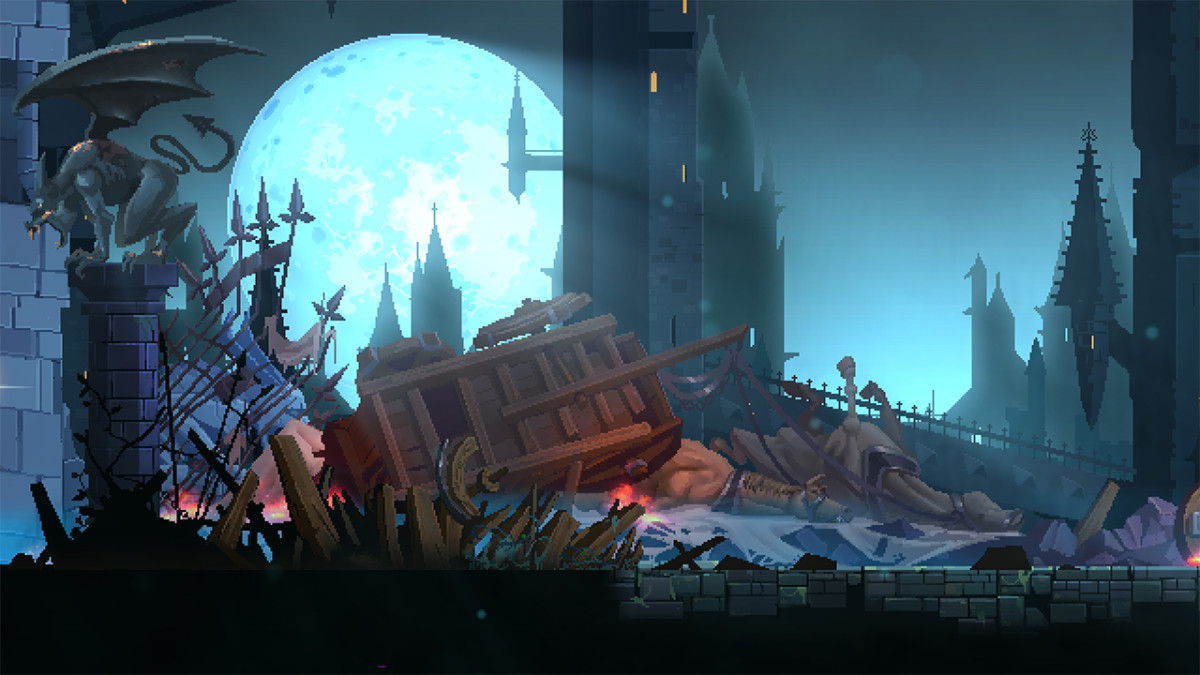
The biomes added feel like a Castlevania game, not Dead Cells, and it’s exactly that kind of small detail that I was worried would be absent. Capturing the spirit of a beloved series is difficult, and even at the best of times, a lot of similar experiences fall short. Not so here.
Then there are the bosses, with some real fan favorites included. After spending a little while ascending the castle, it seemed like I was about to face off against Dracula. It was a bit short-lived, and I hadn’t faced any other Castlevania bosses yet, so I was preparing myself for disappointment. Then Death showed up.
I died, very quickly and very poorly, to Death, but my face literally hurt from smiling at it. It was exactly what I wanted, exactly what I expected from Castlevania. It was a proper, full-fat, no-holds-barred Death fight. I got my butt kicked, but you always do when you fight Death.
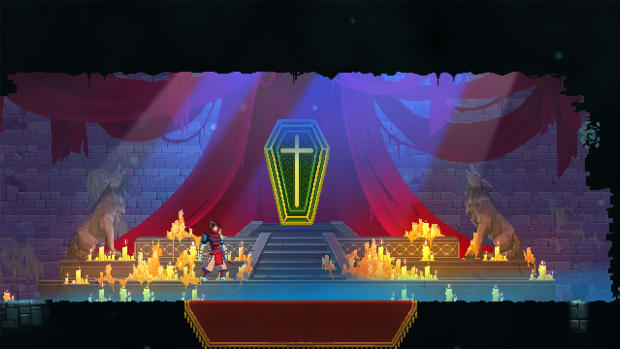
The beauty of Dead Cells is that you can start again, build yourself up with a different set using the randomized tools at your disposal, and try all over. At one point I was fighting Death with Death’s own scythe as a weapon, and that was both absurd and amazing, and I loved every second of it.
After that fight, I was expecting the rest of the DLC to be pretty short. It was not. From here, Castlevania stages start getting mixed into other exits throughout biomes from the main game. You can visit the Clock Tower to do some cool stuff with Alucard, jump back into the castle to have another go at Death to unlock some more cool gear.
Having that content mixed in feels right, it feels natural, like Dead Cells was always just a Castlevania game waiting to happen. That’s probably the thing that surprised me most about Return to Castlevania — at the very core, both Castlevania and Dead Cells are deeply compatible with each other. Konami calls it a return, and a return it is. This isn’t Dead Cells wearing a Castlevania-shaped hat, this is Castlevania.
Return to Castlevania is a triumphant return to form for the Castlevania series, and a near-flawless expansion for Dead Cells. More than just an homage, it carefully and lovingly channels everything you know and love about Castlevania into everything that’s good about Dead Cells. After ten long years, Castlevania is finally back, and it’s very much alive and well.
Score: 9/10
Version tested: PC
